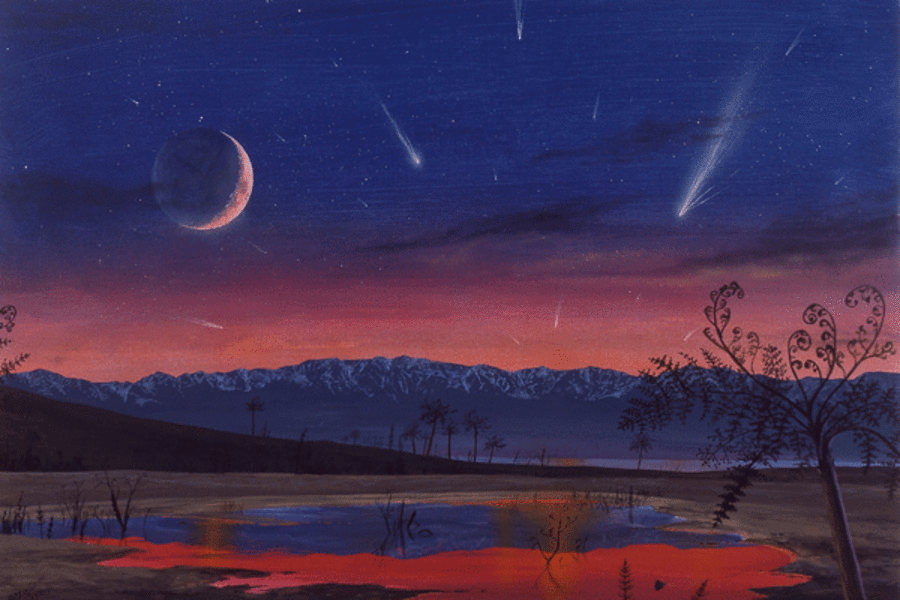It turns out Walt Whitman was right about those giant meteors
Loading...
The long-standing mystery over exactly what famed poet Walt Whitman saw streaking though the sky 150 years ago has apparently been solved by a team of bookworm astronomers.
Following a trail that began with a 19th century painting and led to hundreds of newspaper reports, the researchers discovered that the "strange huge meteor-procession" mentioned in Whitman's noted collection "Leaves of Grass" indeed refers to a rare procession of earth-grazing meteors that occurred in 1860.
"Meteor processions are so rare most people have never heard of them," said Texas State University physics professor Donald Olson, who worked on the investigation. "There was one in 1783 and a Canadian fireball procession in 1913. Those were all the meteor processions we knew of."
Earth-grazing meteors unmasked
Earth-grazers enter the atmosphere at low angle, from the point of view of a given skywatcher, and appear to scoot slowly and dramatically along the horizon. They're much different than meteors appearing overhead and shooting swiftly toward the horizon
For years, Whitman's description had been alternately attributed to several events, including: The 1833 Leonid meteor shower, the 1858 Leonids shower and a famous 1859 fireball. [More Leonid meteor shower photos.]
But the timeframe of the poem, which is titled "Year of the Meteor," listed under "1859-1860," and includes a definite reference to the Great Comet of 1860, conflicted with the 1833 sighting.
Evidence for the1858 sighting was also weakened when the date of a separate meteor shower observation by Whitman was corrected from 1858 to 1833. Additionally, a fireball is only one blaze in the sky, while a meteor procession exhibits multiple blazing objects.
Olson and his team describe their astronomical investigation in the July 2010 edition of "Sky & Telescope" magazine.
Painting shows the way
A single painting by 19th century landscape artist Frederic Church was the happenstance clue in solving the puzzle behind Whitman's reference. Titled "The Meteor of 1860" and picturing a procession of meteors through the night's sky, the work was glimpsed by Olson on the back cover of an art exhibition catalog.
Upon visiting Church's house in New England and a research library that contained old diaries of a friend, the team learned that Church lived in Catskill, NY, in July 1860, when the painting was produced.
That date allowed the researchers to focus their study on the time period's newspapers, which surprisingly enough verified the sighting of an Earth-grazing meteor during the evening of July 20, 1860.
Breaking apart in the atmosphere, the meteor split into multiple fireballs that burned overhead in skies visible from the Great Lakes to New York State.
The New York Times, Smithsonian, and Harper's Weekly all covered the event, with Scientific American calling it "the largest meteor that has ever been seen."
According to Olson, the eyewitness accounts from town newspapers alone totaled in the hundreds and provided enough information about the meteor's changing location for the team to extrapolate its route.
"From all the observations in towns up and down the Hudson River Valley, we're able to determine the meteor's appearance down to the hour and minute," Olson said. "Church observed it at 9:49 p.m. when the meteor passed overhead, and Walt Whitman would've seen it at the same time, give or take one minute."
"A really cool part is that the Catskill newspaper describes it as dividing into two parts with scintillations, exactly like the painting," said co-researcher Ava G. Pope, an Honors Program at Texas State University who contributed to the project.
Despite its extreme rarity as an astronomical phenomenon and its heavy documentation in the day's newspapers and magazines, the event was forgotten by the mid-20th century, researchers said in a statement.





